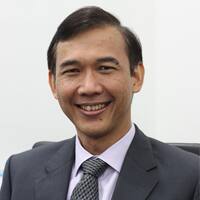Sessions With Didik Sasongko Widi
Wednesday, 13 March
-
11:30am - 12:30pm (CST) / -
Developing Gas-to-Power & the LNG Value Chain in Asia
Panel Gas PowerAsia’s electricity demand continues to surge, and an “all-of-the-above” strategy appears to have emerged as countries are investing in all forms of electric power generation. For the global gas and LNG industry, the future of gas-fired power is a big question for future gas supply and demand. In many parts of Asia, gas faces cost competitiveness challenges, but it is considered a greener fuel with an environmental premium over coal. At the same time, it requires significant value chain development and investment—from regasification terminals to pipelines—as well as stable gas supply. Which markets are moving faster to develop new gas-fired power plants in emerging Asia? What are the key opportunities and challenges facing gas-for-power? Is there a case for integrated value chain development from gas/LNG resource procurement to downstream infrastructure investment?
- Speakers:
- Xizhou Zhou
- Danielle Guccione
- Seng Wai Lee
- Didik Sasongko Widi
- Gaku Takagi
- Zhi Xin Chong

